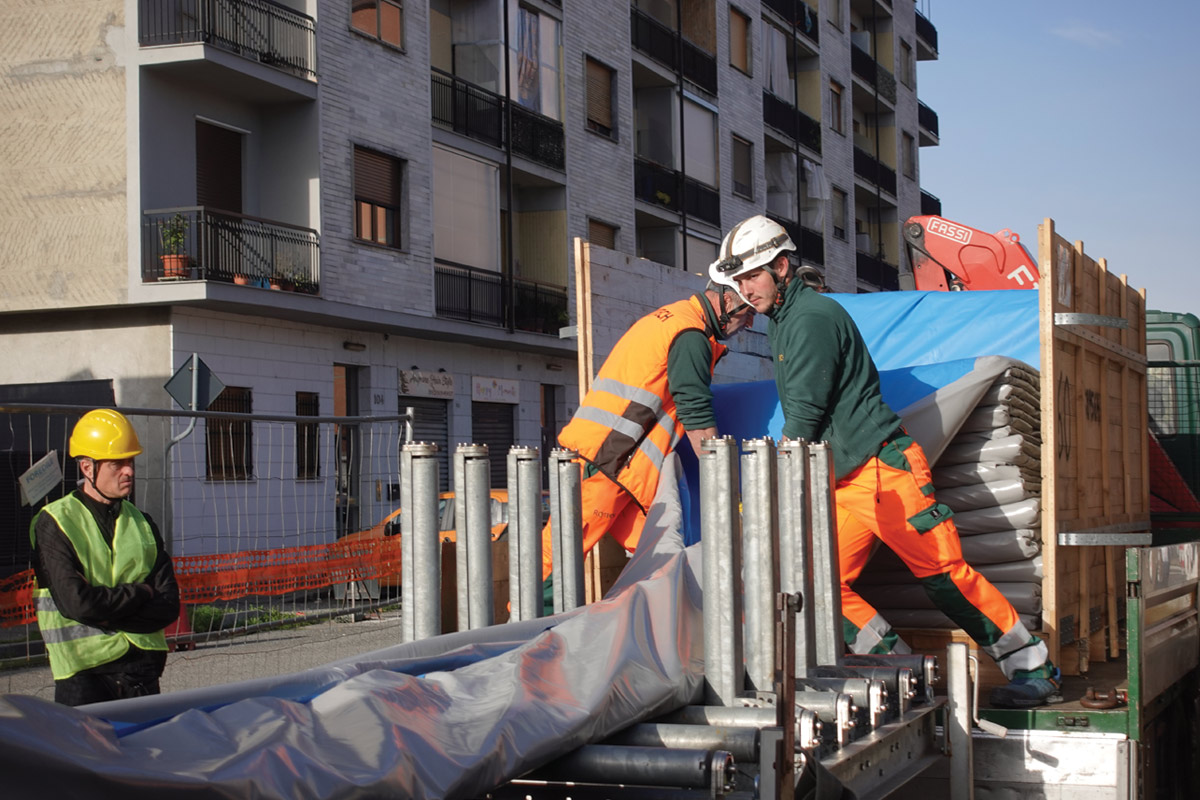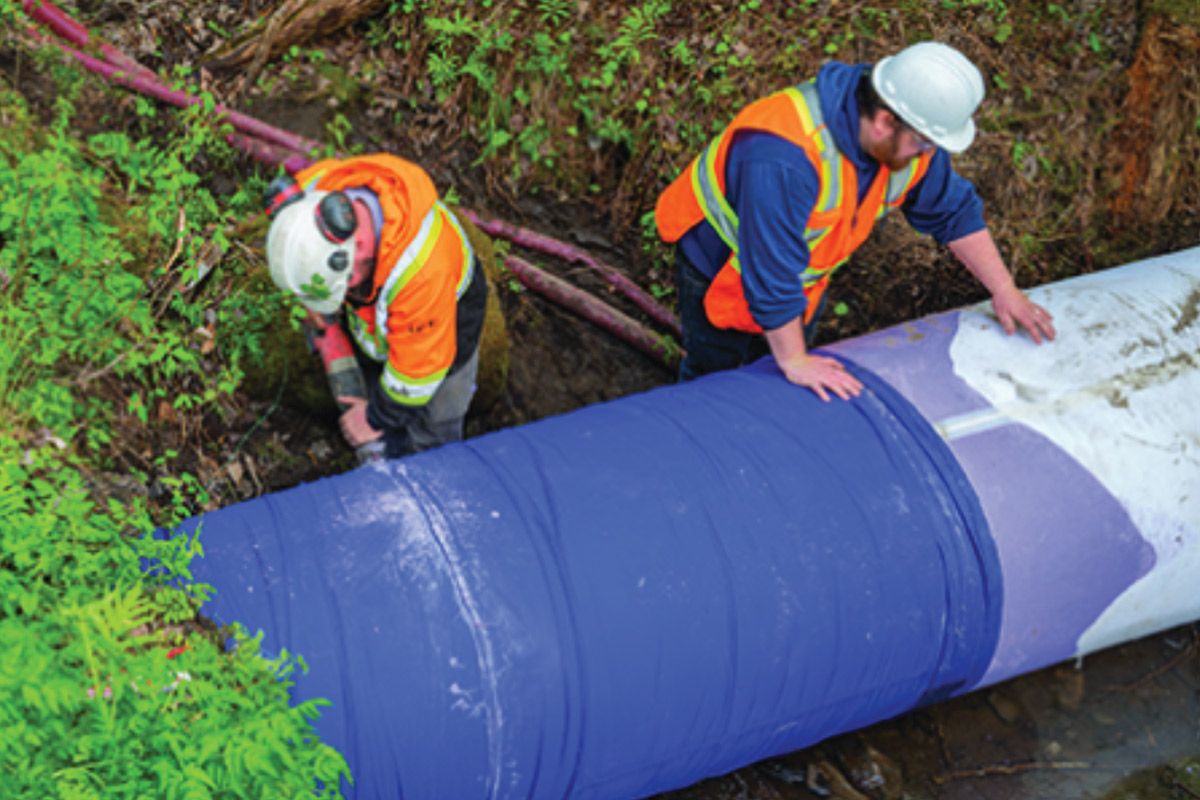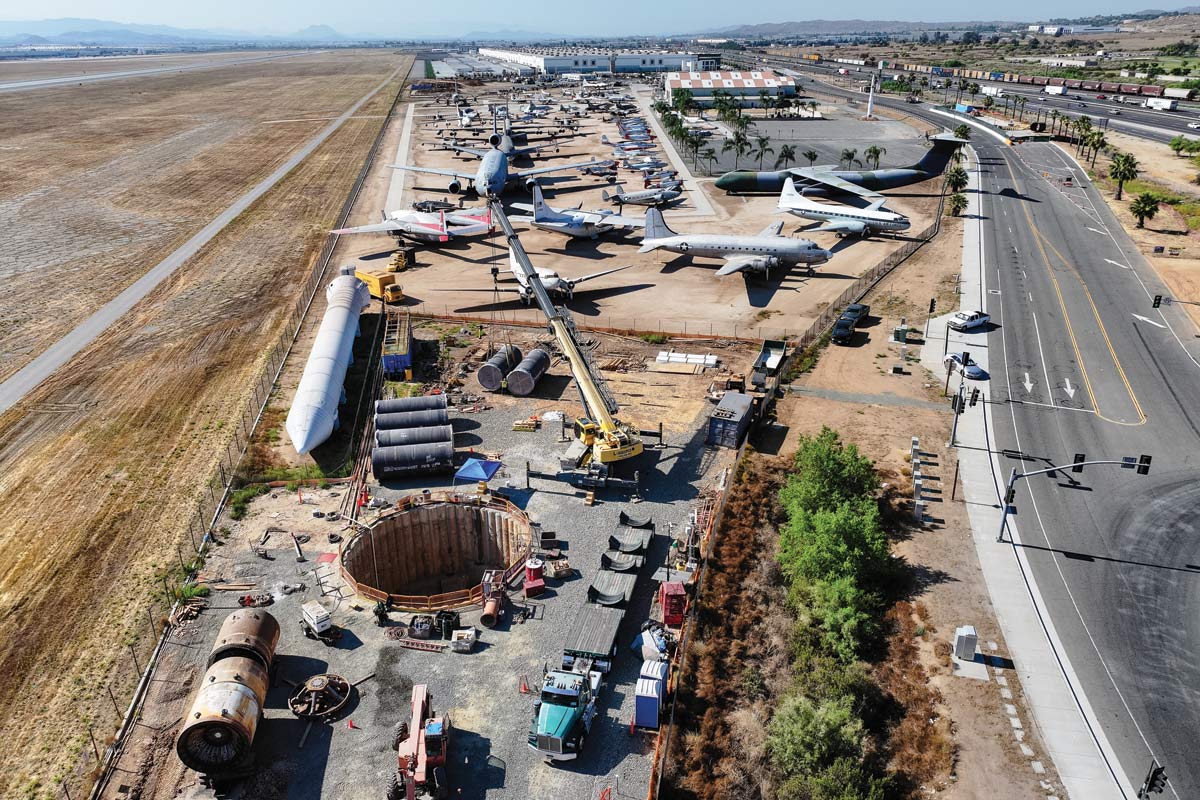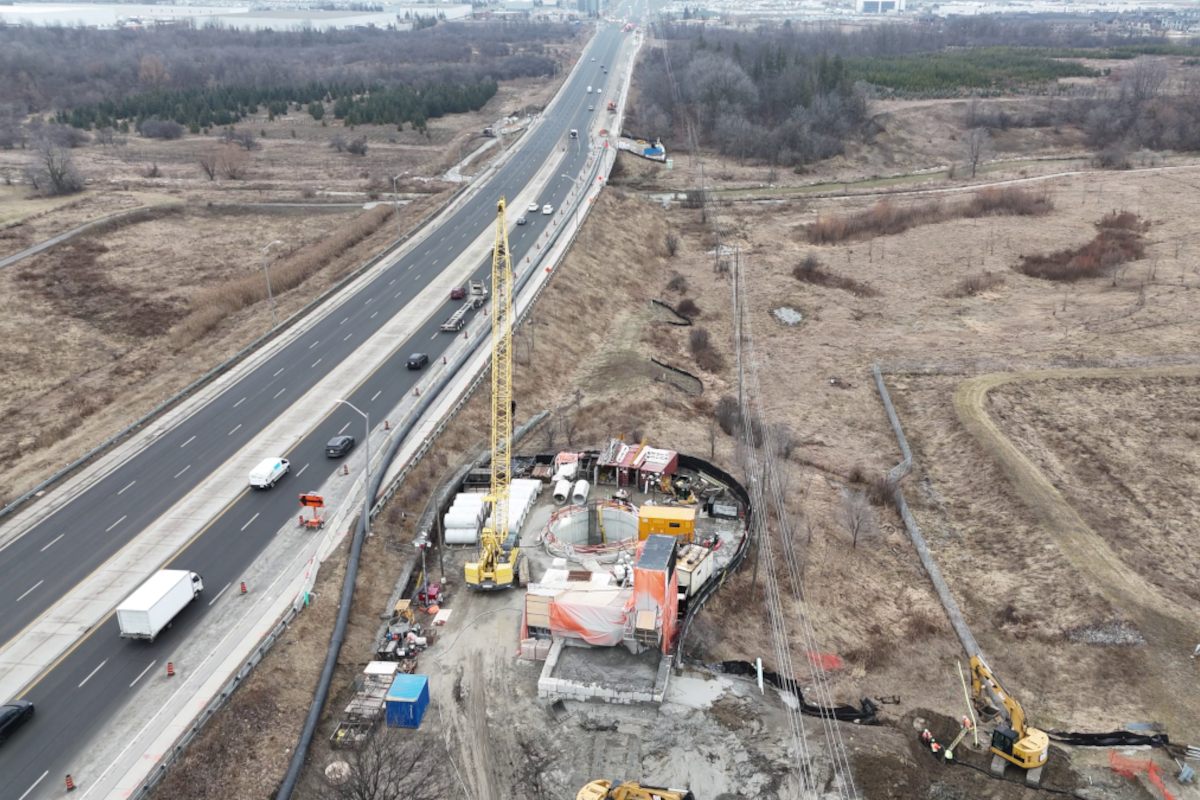
The Old Air Line Trail Rapallo Viaduct Force Main Rehabilitation with FFRP
Many of us have walked and ridden bikes over some of the old abandoned train trails across the nation. As we stroll or exercise along the paths one cannot but wonder of the old structures left behind, the days of operation and their purpose, or, what may lie beneath it.
Many have enjoyed portions of the historic old Air Line Trail railway that once connected NYC and Boston, but may not know of the secrets beneath the portions of the rails running between East Hampton and Colchester, Connecticut.
This area of the trail is well known by locals for hosting two of the only surviving first generation wrought iron bridges or viaducts, constructed in the 1860s through 1870s.

A viaduct is a type of bridge that consists of a series of arches or columns supporting an elevated railway or road. These structures typically connect two points of roughly equal elevations over wide valleys, rivers, roads or other low-lying terrain or obstacles.
RELATED: Connecticut Lining Project at Manufacturing Plant Includes 23 Laterals
The Rapallo Viaduct that once carried the legendary white and gold trimmed Ghost Train approximately 1,380 ft across the Flat Brook is now abandoned and buried. Within its metal trusses lies a 16-in. ductile iron sewer force main that was constructed in 1979.
The force main is owned by the Town of Colchester, and operated and maintained by the Colchester-East Hampton Joint Facilities. In March 2020, three consecutive breaks occurred along the force main between the western abutment and a valve located west of the viaduct. The Joint Facilities replaced damaged segments and installed a temporary bypass piping on the surface of the trail to facilitate the third repair. The line was CCTV inspected and revealed severe corrosion and tuberculation in the segment that ran through the buried historic structure.
The Joint Facilities were seeking a suitable method to repair the aging and failing sewer force main. A trenchless solution was preferred due to its location within the buried viaduct and old railroad ties that made excavation difficult and expensive. Additionally, concerns with the impact of construction equipment jeopardizing the stability of the crossing also had to be considered.

The owner’s consulting firm, Environmental Partners, evaluated different trenchless rehabilitation methods available for a long-term solution. Their analysis took into consideration excavation in the historic structure, excavation near a wetland, reduced hydraulic capacity and project cost. The flexible fabric reinforced pipe (FFRP) lining system was chosen for its ability to install 1,600 ft in one single section with only one pit on each end, reducing the impact on the environment, installation time and construction costs.
RELATED: Relining a Fresh Water Main Under a River in Winnipeg
FFRP systems have been used for pressure pipeline rehabilitation for more than two decades. The system consists of a flexible aramid-reinforced liner and specially developed end fittings. The key advantages of the FFRP system allows for long installation lengths of more than 8,000 ft while traversing multiple bends and its high-pressure capabilities.

FFRP is a factory manufactured round pipe, that is then modified into a “C” or “U” shape, and coiled onto reels. The reels can be 5 ft – 38 ft wide, and accommodate a few hundred feet – 18,000 ft depending on the pipe diameter and project needs.
The installation of FFRP follows the modified sliplining method of pipe rehabilitation. This is where a continuous supply of modified pipe is winched through the host pipe and reverted back to its manufactured “round” shape by air pressure. Once in place, mechanical or welded end connectors are installed to terminate and seal the liner within the connector, thus creating a new pipe within-a-pipe.
Before installing the FFRP system, certified installation partner J. Fletcher Creamer & Son conducted the required CCTV inspection and pipe cleaning that is required for the liner insertion.
RELATED: New life for a 16-inch sewer force main under an active bike path
With a speed of approximately 20 ft per minute, the liner was pulled into the host pipe with a winch at the destination pit. Subsequently, the two medium-pressure connectors where assembled. The installation process itself was completed within one working day followed by a hydrostatic pressure test.
Many in the industry know trenchless technologies have been used in many unique and fascinating places. And yet, sometimes we can still be surprised of pipelines laid in places which one would never have suspected.
George Gerz is the senior technical sales manager at Raedlinger Primus Line Inc.




